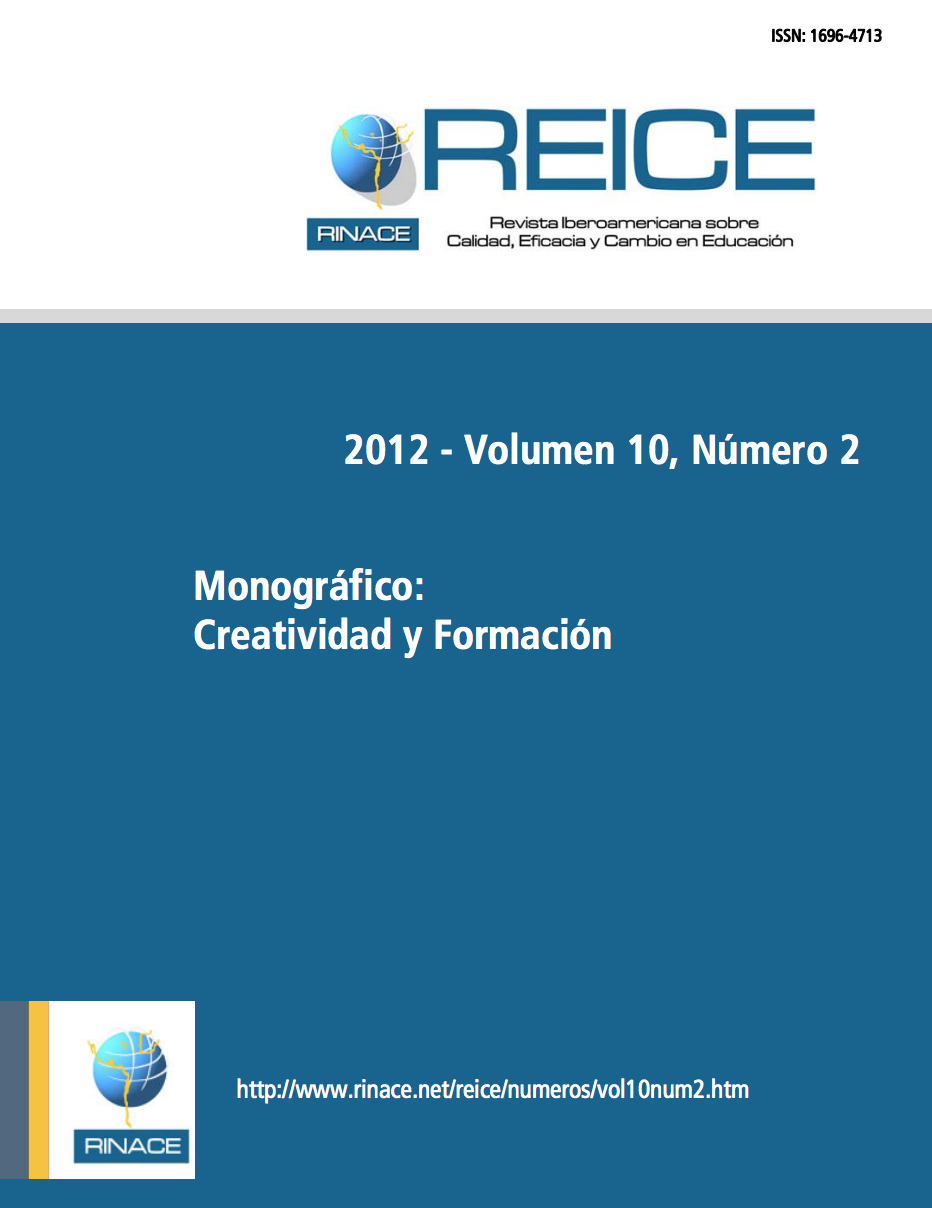Keywords:
reativity, action research, teacher's practical thinkingCopyright (c) 2016 REICE. Revista Iberoamericana sobre Calidad, Eficacia y Cambio en Educación

This work is licensed under a Creative Commons Attribution-NonCommercial-NoDerivatives 4.0 International License.
Abstract
This article presents a proposal to transform continuing education based on social networks from the exploration of the Herrán´s notion of creativity applied, with which to analyze teaching practices in higher education. This is a process of training followed by another action - research with the help of ICT, a cycle of 3 steps to rethink the practice. The participating teachers changed their schedules including creativity, develop projects in this vein with his students and shared on a network with other teachers. As a result of this, we extracted some strengths and weaknesses of the process, and lessons for redrafting.
Downloads
References
Clegg, P. (2008). Creativity and critical thinking in the globalised university. Innovations in Education & Teaching International 45, no 3: 219-226.
Davis, N. and D. Morrow (2010). Synergy between information and communications technologies and educational action research and collaborative construction of our active identities. Educational action research 18, no 1: 89–101.
Feldman, A. and T. Weiss (2010). Understanding change in teachers’ ways of being through collaborative action research: a cultural-historical activity. Educational action research 18, no 1: 29-55.
Herrán, A. de la. (2006). Hacia una creatividad complejo-evolucionista. Redefinición del concepto de creatividad desde una educación de la conciencia. In Comprender y evaluar la creatividad. Vol. 1: Un recurso para mejorar la calidad de la enseñanza, eds. S. de la Torre and V. Violant, 112-139. Málaga: Aljibe.
Herrán, A. de la. (2008a). Creatividad para la formación. En Compendio de Didáctica General, ed. J.C. Sánchez Huete, 557-606. Madrid: CCS.
Herrán, A. de la. (2008b). Didáctica de la creatividad. En Didáctica General: La práctica de la enseñanza en Educación Infantil, Primaria y Secundaria, eds. A. de la Herrán y J. Paredes, 79-123. Madrid: Mc Graw-Hill.
Herrán, A. de la. (2009a). Contribución al Concepto de Creatividad: Un Enfoque Paquidérmico (1ª parte). Educación y Futuro. Revista de Investigación Aplicada y Experiencias Educativas 21: 43-70.
Herrán, A. de la. (2009b). La Práctica de la creatividad formativa: Selección de técnicas didácticas. In La práctica de la innovación educativa, eds. J. Paredes and A. de la Herrán, 73-104. Madrid: Síntesis.
Hoban, G.F. (2002). “Working” chapter self-study through the use of technology. International Handbook of Self-study of Teaching and Teaching Education Practices 2: 9-14.
James, A. (2009). How do New Designs for Education and Education Leadership Include Concepts of “Least Intrusive Education (LIE)? Or other forms of student-driven curriculum? Paper presented at European education research Association conference, ECER 2009, September 28.
Lieberman, A. and L. Miller (2001). Teachers caught in the action: professional development that matters. New York, Teachers College Press.
Stuckey, B. and S. Barab (2007). New conceptions for community design. In The Sage handbook of e-learning research, eds R. Andrews and C. Haythornthwaite, 439-465. Los Ángeles: SAGE.
Torre, S. de la. (1993). La creatividad en la aplicación del método didáctico. In Estrategias metodológicas en la formación del profesorado, eds. M. L. Sevillano and F. Martín-Molero, 53-100. Madrid: UNED.
McIntosh, P. (2009). The puzzle of metaphor and voice in arts-based social research. International Journal of Social Research Methodology 13, no 22: 157-169
Torre, S. de la. (2006). Un modelo polivalente para evaluar la creatividad. In Comprender y evaluar la creatividad. Vol. 2: Cómo investigar y evaluar la creatividad, eds. S. de la Torre, and V. Violant, 122-142. Málaga: Aljibe.
